Teachers biographies and class descriptions of the contactfestival 2020!
LEVELS:
The classes are not divided into levels. In case the teacher found it necessary to ask for certain abilities you will find it inside their class description.
Please read the descriptions and respect your own limits.
In the registration process you will choose your intensive. Just make your decision depending on the themes of the intensives. The classes you can choose spontaneously at the Festival.
On the first day the focus will be on Contact Improvisation principles.
| Intensives |
Classes |
|
|
|
|
| |
Friday |
Saturday |
Monday |
Tuesday |
|
| Charlie Morrissey |
Alice Le Guiffant |
Kim-Jomi Fischer
Marta Alstadseter |
Kevin Dockery |
Gabriele Reuter |
|
| Matan Levkovich |
Sarah Konner |
|
|
|
|
| Konstantin Gerardos |
Olivia Shaffer |
Gregory Chevalier |
Jadi Carboni |
Tamara Ashley
|
|
| Susanne Martin |
Jacob Cino |
Anir Leben |
|
|
|
| Fabiana Capriotti |
Rosalind Holgate |
Ayelet Yekutiel |
|
|
|
| |
Christopher Chu |
Roxana Galand |
|
|
|
| Musicians: |
|
|
| |
|
last update 21th of January 20 |
|
| INTENSIVES |
|
| Charlie Morrissey |
UK |
|
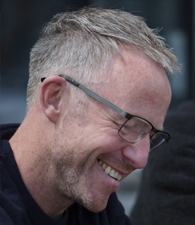 |
is a director/choreographer, performer, teacher, and researcher, working in the field of dance and performance for nearly 30 years. He is influenced by long-term working relationships with Steve Paxton, Siobhan Davies, Lisa Nelson, Kirstie Simson, Scott Smith, Katye Coe, K.J. Holmes, Katie Duck and others. Teaching and performance are at the heart of his practice, and his classes are laboratories for exploration and discovery. He teaches for dance and theatre companies, institutions, festivals and independent organisations internationally. Recent and upcoming projects include several collaborations with Siobhan Davies; a new performance for five dancers - If this is it, then what are we going to do with it?; a solo choreographed by Colin Poole - White Charlie; performances of Quarantine’s Wallflower and a new solo What’s not there. Charlie also curates a program of dance events with Rob Hopper in Yorkshire.
Wainsgate Dances: https://www.facebook.com/groups/559122184434991 www.charliemorrissey.com |
|
| BODIES WITHOUT END |
|
| CI - PERCEPTION - MATERIAL FOR THE SPINE |
A movement workshop, which brings a number of different lenses to the study of Contact Improvisation. It will create a space in which to explore overlapping versions of our bodies such as: The body as an anatomical proposition (with the skeleton as a point of focus); the body as a perceiving entity; the body as material/substance in relationship to the physical forces of the universe; the body as a series of processes in time; the body as a reflection of it’s environment. We will work with practical physical exercises and propositions to explore the shift between these and other potential versions of ourselves. We will explore movement as something, which is fundamentally about being in relation and will consider the imagination as an embodied evolutionary phenomenon that deals with the relationship between ourselves, and everything that we think of as not us. We will work with space as something, which invites movement (and vice versa), and perception and attention will provide our materials for dancing. This workshop draws on Charlie’s experience of the work of Steve Paxton via experiments in the studio around, on the way to and departing from Material for the Spine; as well as on the tuning and perceptual practices of Lisa Nelson as extrapolated through his own teaching and performance practices.
|
|
|
| |
|
|
|
| Matan Levkovich |
IL/AT |
|
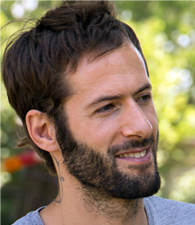 |
is the founder of the Movement Lab - a vehicle for movement education and choreographic work. His practice is influenced by his rich background in contemporary dance, martial arts, contact improvisation, somatic practises, applied anatomy and more. In the last decade, he devoted himself to educate people from all over the globe about better movement and to reflect upon urgent social phenomena through the medium of performance art. His passion for research and discovery drives him daily to expand his understanding and to further develop himself as a human being.
https://movementlab.eu/, https://matanlevkowich.com |
|
MOVEMENT INTELLIGENCE
|
|
| AWARENESS - PHYSICALITY - ENGAGEMENT |
The main objective of my classes is to help you developing a physical relationship with your body. By doing so, you can learn more on how your body functions, expand your physical capacity and regain your freedom of movement. In each class, we will focus on a different movement principle and will study it through different materials (contemporary dance, martial arts, contact improvisation, functional training etc.). We will learn solo materials and will work with a partner or with the whole group. Core principle of my practice is the Increase of Awareness. If the way you train contains only repetitive patterns that you do mindlessly, you might get some benefits but you are missing the most important ingredient - body awareness. Without increasing awareness there could not be a real change in the way you use your body. Learning to fail, failure and improvement go hand in hand. Humans learn movement by first failing at it. We did it as babies and we keep doing it as adults. Learning how to deal with failure in a positive manner is a crucial point for long-term success and improvement. Making it pleasurable to keep you engage in the practice, we make sure that it is not only ‘good’ for you but that you will actually enjoy it while doing it. Everybody wants a healthy capable body but no one wants to do some boring, repetitive training routine. Moving away from your comfort zone you need to be challenged to keep evolving. Constant success represents failure in continued learning. But comfort zone is an individual thing, some needs to push more and some need to learn how to rest… |
|
|
|
|
| Konstantinos Gerardos |
GR |
|
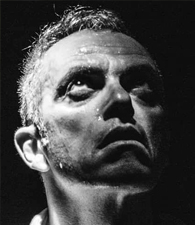 |
started dancing at the National School of Dance in Athens when he was 11 years old. He continued his studies at the Morianova Professional Dance School and graduated from the Professional Dance School of Stavroupoli. From 1989-2004 he danced for the Thessaloniki Dance Theatre. His career as a dancer has continued until today. In 2001, he founded his own company, ‘VIS MOTRIX DANCE COMPANY’ based at the Vis Motrix Performance Studio in Thessaloniki and has been creating and directing its performances in Greece and abroad (Great Britain, Germany, Spain). He has also worked as an actor for the ‘Nees Morfes’ Theatre Company and as a choreographer for theatre and opera. During his work as a dancer and choreographer for the past 30 years, Konstantinos Gerardos has also developed a great teaching experience in Classical and Contemporary Dance, Improvisation, CI, Partnering, Ensemble Improvisation, Composition, Choreography and Performance in professional dance schools and acting schools. He has taught Improvisation and Choreography at the Dance and Performance course at the University of Lincoln in England and workshops in contemporary dance and CI in Spain, Germany and Canada. He has collaborated with Chris Aiken, Angie Houser Kirstie Simpson, Nita Little, Ray Chung, Eckhard Müller, Gregor Weber, Thomas Mettler, Yaniv Mintzer. |
|
| LEANING TO THE UNKNOWN |
|
| CI - SKILLS - IMPROVISATION |
There are many reasons to improvise: warming up, creating specific movement for choreography, bonding groups of people together, exploring new movement qualities, achieving a particular somatic state, creating a performance. In this intensive, we will attend to the use of improvisation as material to enrich our CI skills and improve the quality of touch and movement in contact with another dancer. We will zoom into the tangible body and its physiology, skin, soft tissue, muscles and bones to inspire our dance. Working solo and in contact we will clarify their role in our personal way of moving and in CI. Isometric positions will clarify the use of our muscles and playing with the soft tissue of our bodies solo and in contact, they will enrich the sensitivity of our perception through the skin. We will study the architecture, function and movement qualities of specific body parts like the spine, the hip joints, the torso, the pelvis or the extremities to improve our skills when we are in contact with our partner. Exploring different ways of rolling, sliding, on or off the floor and using the floor as well as a partner to support our travelling through space will bring lightness and clarify our relationship with space, time and gravity. Starting from the known we will find the tracks to the unknown, starting from the familiar and the reliable we will travel to the unanticipated and the unpredictable. Starting from our own bodies (solo) we will investigate the elements of improvisation that will help us to improve our improvisational awareness, the ability of listening, not only to our own body but also to our partner's body, and to experience a dance that is born from our mutual surrendering to each other using improvisation as a tool.
|
|
| Susanne Martin |
DE |
|
 |
I am an improvisation-based choreographer, performer, teacher, and researcher. I present my work internationally in solo performances, collaborative stage works, lecture performances, and workshops. In my teaching I focus on what I call sense-ability, response-ability, and play. In my performance practice I focus on the exciting tensions between improvisation, meaning making, total involvement, and ironic distancing. In my research I focus on artistic research methods, critical narrations of the aging body (see book “Dancing Age(ing)”), and improvisation as pathway for learning and the producing knowledge. Festivals that presented my performances include: International Dance and Theatre Festival (Gothenburg), Aerowaves (London), Nottdance (Nottingham), Opera Estate Veneto (Bassano del Grappa), Tanec Praha (Prague). In my current postdoctoral research project at EPFL, Switzerland I examine dance improvisation in its potential to rethink and advance processes of learning and researching in a Technical University. My practice of and love for contact improvisation informs all these doings.
www.susannemartin.de |
|
| JAM SWEET/SOUR |
|
| CI - FUNDAMENTALS - STRATEGIES |
How to make CI jamming an interesting, enjoyable practice? This question is especially relevant for people who are new to this form, but it also comes up for long-term CI dancers. I jam regularly for more than 20 years by now. I still enjoy it and I still learn from it. In this intensive I want to share some strategies and tools around how to enter a jam, how to feel involved, find a focus, and shift focus during jamming. We’ll address and explore issues around dancing, watching, resting, studying, choice making, caring, fear, self-protection, finding and dropping energy, connection, and artistic pleasure while jamming. We will spend time not only on jam pleasure strategies and jam survival strategies but also on some basic technical issues like rolling, centre-to-centre work, gradually giving weight to a partner and (importantly) taking weight off again. Overall, we will use the class to support each other in expanding our repertoires as jammers and CI dancers. PS: This intensive emanates from the single class ‘Jam Sweet/Sour’ at Freiburg Festival 2017. I thank all participants from 2017 for their curious and joyous experimentations, which inspired me to dig even deeper into jam questions this year.
|
|
|
|
|
|
| Fabiana Capriotti |
RA
|
|
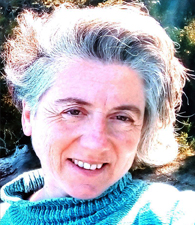 |
I’m engaged in a dance research through teaching, directing, writing, drawing and dancing dance, since 1995. My dancing observes and manages dancing. My dancing composition interests meet dance in a deep spiraled volume of presence. Presence as anchoring while opening directions. Presence as strength as well as vulnerability. My dancing interests bring separated parts together making presence a complex quality full of mystery. Dancers & Teachers with whom I studied that influenced my dance in different ways: Julyen Hamilton, Lisa Nelson, Meg Stuart, Joao Fiadeiro, David Zambrano, Katie Duck, Shelley Center, Wally Cardona, Donna Uchisono, Rebecca Hilton, Bárbara Mahler, Kirstie Simpson, Marina Giancaspro, Teresa Duggan, Martha Lozano, Patricia Padula and Nora Padula among others. All the techniques I went through from Ballet, Graham, Limón and Cunningham technique till the most modern and experimental like Release technique, Kline Technique, Contact Improvisation, Flying Low, Spontaneous Composition, etc left a trace in my body as well as in my imagination. I also went through kung-fu, aikido and yoga training and within the somatic world I am deeply involved with Alexander Technique and Feldenkrais. In 2015 I published HACER MAGIA (Asuntos de danza) a book handwritten and illustrated by the author. http://fabianacapriotti.blogspot.com |
|
| DANCING POETICS & POLITICS |
|
| IMPROVISATION - OBSERVATION - TOUCH |
I’m interested in dancing as a tool for observing presence.
I’m interested in dancing as a tool for observing poetry and politics.
I’m interested in dancing as the tool for observing particularities that emerge from the group.
I trust bodies producing knowledge.
Exercises will suggest making silence as a space for meeting the observation of sensitivity, strength and intuition. Touching as a practice of opening directions in space and as a territory where to observe myself resonating with the single body, the body beyond the body, the network of bodies, the strength of the group and the corporality. To attend the non body quality of dancing: the moment when the dance disembodies to transform space, time and others in "the other"; the process in dancing, updating it and learning from the experience: from strength into vulnerability and vice versa. The what we do + what happens in the dancing as the bodies are managing sensations, images, sight, time, space, senses, presence, embodiment, etc. and make visible your decisions of how you read and write the present time, your memory, history and your position for the future.
|
|
|
| |
|
|
| CLASSES |
|
| FRIDAY |
| Alice Le Guiffant |
FR |
|
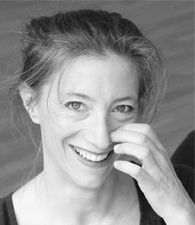 |
When Alice was 4 years old she decided that she wanted to be a dancer. And so she danced and learned. Discovering CI almost 14 years ago turned out to be a big turning point in her relationship to dance, to her body and to the world at large! Since 2010, she's been teaching (France, Slovenia) and organizing festivals workshops, and residencies. She danced for Tactotempo, Entre les nuages, Kiija. She also teaches CI in primary schools. Lately, in her teaching, she's been focusing on the power of words : they root the experience of the dancers, help them understand what they're going through and by sharing, allow a growth in awareness for all. |
|
| Giving and Receiving Weight |
Principles |
| When discovering CI, one of the most difficult questions to deal with is weight. How to give it, how to take it, how to take only what we can take, how to say stop, either with words or with clear indications of our bodies, how to get rid of it, how to avoid it all together? During this workshop, we will explore the travel of weight inside our own body, through the body of our partners and to the ground, trying to feel it as precisely as we can. We will work solo, then we will train in giving and receiving it, in accepting or refusing it. And of course, we will dance! Crowd sourcing will be one of our tools to understand a bit more what we are doing and experiencing and to help us build on what we learn. |
| Sarah Konner |
US |
|
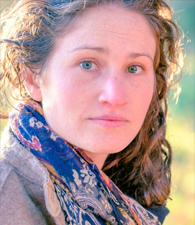 |
Sarah is a dance artist, improviser and Somatic Movement Educator based in Brooklyn, NY. Sarah teaches through Movement Research, Gibney Dance, and Smith College; co-organizes CI Ground Research since 2012; and leads a yearly all-women's CI Lab weekend. Sarah's performance work has been presented at museums, theaters, and colleges throughout the US. Recent collaborators include Chavasse Dance & Performance, Beth Graczyk, Anneke Hansen, Shura Baryshnikov, setGo Performance, and Austin Selden. Sarah holds a BFA in Dance and a BS in Environmental Science, is a current MFA candidate at Smith College, and is certified in Yoga, Pilates, and Body-Mind Centering. www.SarahandAustinDance.com |
|
| Deciding While Falling |
Principles |
| We build listening skills within the dance by feeling the pull of gravity, the weight of our bodies in movement, and how our weight creates momentum. In this place of deep listening to what is happening moment to moment, we also have a solo of choice-making to play with and craft time. As do our partners. In this class we will build deep listening to shared weight, momentum, and flow, and then find individual agency within the duet to join, direct, and redirect waves of momentum. We will use these tools and others to practice changing the time of flow in order to create cadence and poetry within our solo and gift surprise to ourselves and each other. |
| Olivia Shaffer |
CA |
|
 |
Olivia is a professional dancer¨ teacher and choreographer Her movement philosophy is shaped by her extensive background in CI contemporary dance improvisation somatic practices and Pilates Olivia has trained in CI 5 days week since 2011 under master teacher Peter Bingham in Vancouver. She has performed with his company ¨EDAM Dance¨ since 2014. She has also studied with Alicia Grayson, Karen Nelson, Andrew Harwood, Ray Chung, Chris Aiken, Frey Faust, Martin Keogh and Angelika Dony among others. Olivia teaches regularly in Canada and has taught in the US “SFDI” Berkeley and SE Asia University of the Philippines www.oliviashaffer.ca |
|
| Surfacing Layers |
Principles |
| We will explore how we can “invite” rather than “insist” in a CI dance: the more body surface we provide, the more outcomes become possible. As opposed to manhandling our partner, we explore atypical surface area to stack-on or pour-in to enjoy an effortless, consensual ride. We will sense timing and modulations of tone, when we might yield and when we might reach out into space. Olivia takes a sincere approach to safety. Her classes offer an opportunity to develop CI techniques that will both foster the dancing of beginners and satisfy the hunger of more experienced practitioners. |
|
|
| top |
| |
| Jacob Cino |
CA/TT |
|
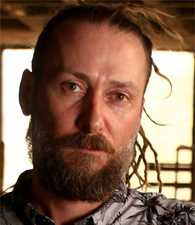 |
Jacob is a Dancer, musician, DJ, choreographer, painter, and filmmaker. A Canadian living in the Caribbean island of Trinidad and Tobago for the past seven years teaching yoga and dance. He started classes in CI with Peter Bingham in Vancouver in 1999. This led to apprenticing and working with Peter at Edam Dance and to a 15-year professional dance career in CI based choreography as well as Afro Contemporary and traditional Caribbean Folk. As a musician, he also created sound design scores for dance, and film as well as created beat driven electronics music for dance floors as a DJ. He has both; choreographed and taught CI in Canada, USA, Jamaica, Barbados, and continues in Trinidad. |
|
| Sensitize and Reflect |
Principles |
| We will be coming into the senses of the body by starting with low slow dancing. Simple floor patterns and exercises to help release and find the pathways of least effort in the body. Inhabiting a low effort movement sometimes called mush dancing. Through this softness we attune our listening to the subtleties that allow a base for us to eventually explore larger movements. Taking the time to start small to get big. Once we're warm and dancing we will start to take a pause after our timed dances and converse. Using these times to discuss and reflect on techniques, regional stylistic differences, cultural influences, and the metaphors for our understanding ourselves and our interaction with life. |
|
| Rosalind Holgate |
UK |
|
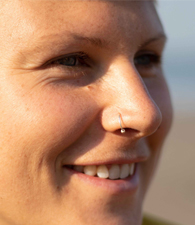 |
Rosalind is a Dance Artist and Somatic Movement Practitioner. She has an MA in Dance Creative Practice, a BA in Fine Art & Choreography and currently Lectures in Dance at Lincoln University. She has been practicing CI for over 10 years since encountering it as a student at Dartington. She has applied CI in teaching diverse groups ages & abilities. Further inspired by Contact Improvisation, Authentic Movement and Experiential Anatomy she also creates performances and installations and has developed a vocabulary for moving outdoors. Rosalind is also a Yoga Instructor and following her love of water teaches the Shaw Method for swimming, integrating the Alexander technique. |
|
| Where is the weight? |
Principles |
| In this class we will explore how to safely place our weight. We will begin mapping some boney landmarks of the pelvis to locate our centre of gravity and establish a sense of rootedness. From here we will play; shifting and placing our weight up, down and in relationship. We will also investigate gradually deposing weight onto more static structures, touching through different layers of tissue, leaning into and looking through the skin to read the support of our architecture. Working slowly will provide a framework to examine our boundaries, how much do we want to give? Slowness will further establish a foundation for turning up the speed and releasing into more dynamic dancing. |
|
| Christopher Chu |
TW/HK |
|
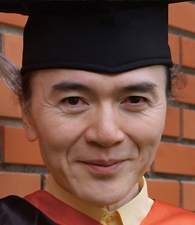 |
Born in Hong Kong, Christopher received his BS in Civil Engineering from the National Taiwan University where he started dancing and has never stopped. Chu is the founding member and current Executive Director of Ku & Dancers, and a member of the Performing Arts Alliance, Taiwan. In 2017, he received his MFA degree from Taipei National University of the Arts (TNUA) Dance School, of which he is a current PhD student. Chu started CI in 1992 when it was first introduced into Taiwan by Ming-shen Ku. He has been teaching CI for more than twenty years, mainly in Taiwan but also in Canberra, Hong Kong, Beijing and Nanjing. He is now active as a freelance dancer, choreographer and dance teacher. |
|
| Thinking in Movement |
Principles |
| Focusing on basic principles of CI in a phenomenological approach, this class will start with simple standing and walking. Establishing the awareness of body in movement through different perceptions, mainly on the sensation of touch, we explore our being in the world and finally to include others. The touch becomes a major link. The interaction gradually established will be a process of listening and suggestion, thus developing into a non-corrective, pleasurable and empathic improvisation dialogue. It consolidates the ideas of Sheets-Johnstone’s primacy in movement and Merleau-Ponty’s primacy in perception, and enriched with the eastern philosophy of Lao-tzu. |
|
|
|
|
| SATURDAY |
Kim-Jomi Fischer
Marta Alstadseter |
NL
NO/NL |
|
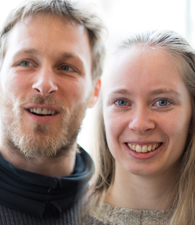 |
Kim and Marta met in 2015. Their different backgrounds in contemporary dance and circus sparked a blooming collaboration. During the last years they have been creating their own movement vocabulary, diving into the possibilities and qualities they find within this symbiosis, exploring their identity across languages. This has naturally lead them into creating work together, creating a space where they can go beyond the frames of their disciplines and dive into the physical communication in between them. They are making work in Norway and the Netherlands. Besides performing, they also teach and share their work through several forms of workshops and movement labs. |
|
| Accessing Structures |
|
| Our work is characterized by combining techniques of partnering acrobatics and dance, often using principles of CI as a connective tissue. We aim to 'decompose the trick' and treat every part of the movement as equally important. Our workshop will start with simple themes and keep building on them to bring the body in a sensitive and listening state. Then we are ready to carry each other in a more efficient and lighter way, through our bone structures. We will focus on transporting weight through our centre and making ourselves available for being partnered. We will also deal with differences in body and mass, offer some tools from basic partnering acrobatics and build human structures. |
| Gregory Chevalier |
FR/HU |
|
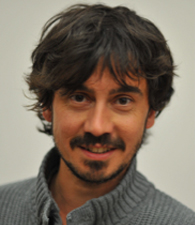 |
Originally from France, Gregory lives in Hungary. He started dancing in China being employed as a show dancer, then from contemporary dance studies he discovered Contact Improvisation and Somatic techniques. His research in dance includes self inquiry, mysticism and community building, inspired by a sensitive and love full body. He gives body consciousness based CI and improvisation workshops mainly in Hungary and recently in France, Georgia, Israel, Serbia and Austria. He performed with/for Claire Filmon, Bérczi Zsofi, Berger Gyula, Dora Attila, Ruri Mito, Rubik Ern? Zoltán and Lévai Viola. The main teachers who are and have been inspiring him are Ferenc Kálmán (BMC), Sabine Parzer (Authentic Movement), Nancy Stark Smith, Steve Paxton, Daniel Lepkoff, Stéphanie Auberville and Julyen Hamilton. He recently initiated an Underscore research group and the Hungarian Contact Improvisation Festival (www.kontaktland.com). |
|
| Helical Lifts |
|
| Spirals, helixes and vortexes appear naturally in CI as a language to integrate body awareness together with space and time. Those dynamic forms are present in nature and in our body. We will investigate helixes within the individual body system and within the two-body system reflecting what nature is doing. We will work with spine, organs and reflexes, using the head, spinning’s and fallings. We will explore complementary pathways to guide us into effortless dynamic dance until chest and shoulder lifting’s. The workshop includes all levels of experience and will be technically advanced at some point. |
|
| |
|
| top |
| Anir Leben |
DE |
|
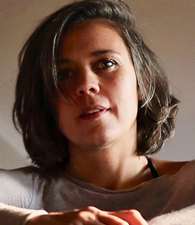 |
is a dancer and musician, teaching and hosting classes and events that inspire presence and aliveness in the individual as well as in the group body. She graduated in Dance, Improvisation and Performance at TIP, bewegungsart Freiburg 2013 and guest-studied Rhythmik (music and dance) at the UDK Berlin. For the past 9 years, she’s been teaching internationally and creating events in and out of Berlin. In 2016 she founded the ScoreJAM, a JAM & LAB format aiming to contribute to raising the CI practice quality in Berlin. Recently she also founded the Conscious Dance format "AbunDance" that is inspired by the works of Gabrielle Roth's 5-Rhythms. Anir encourages curiosity, self-responsibility and the investigative approach of each individual. www.anirleben.com |
|
| Change & Response-Ability |
|
| I'm curious about how practicing different tastes of Changes with our CI bodies can inspire our responses to range into more possibilities out of which we can choose the wisest and most fun one. The current situation of our planet and its changing climate touches many of us deeply and often we are startled and respond unwisely out of our survival fear patterns. In this class I'll be proposing several exercises and Improvisation Scores that inspire sensing and playing with Change in different ways and explore questions like: Where in my body can I sense change? What speed and color do the switches come with and what are my typical responses? How can I expand my range of answering to those alterations? Be ready for oscillating between moments of sensing in stillness, weird exercises, wildly improvising with scores and verbal exchange. |
|
| Ayelet Yekutiel |
IL |
|
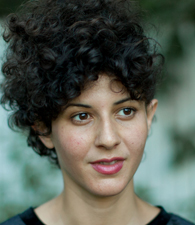 |
Ayelet is a certified ‘Axis Syllabus’ teacher, and ‘Somatic Movement Educator’ of ‘Body Mind Centering®’. Graduate of ‘SEAD’- Major in Dance (AT) and ‘Kelim’ Choreography Studies (IL). Worked as a creative dancer for companies and creators such as: Kolben Dance Company, Dafi Altabeb, Daphna Horenczyk (IL), ‘The Symptoms’ Theatre and Dance Company (HU), Lina Hoehne (DE) Michael Schmid, Benjamin Vandewalle (BE), Sara Shelton Mann (US) and more. She is a founding member of ‘Augustine Collective’ and an independent teacher and choreographer, performing and sharing her work internationally in contemporary dance, CI and movement research contexts. |
|
| Inner Ear Treasures |
|
| An exploration of the magical inner ear, where both tone and tonus, sound and equilibrium, and orientation in space - are sensed. Diving into a dynamic architecture that includes the fluid-vibrating shell shaped cochlea, the vestibule with its gravity indicating crystals, and a labyrinth of semicircular canals- corresponding to the three planes of motion. We will engage in hands on, listening, somatization, sound, movement and CI. Using tools and principals from BMC® and Axis Syllabus, we will explore sensation and perception in our three-dimensional dancing bodies within the matrix of space-time continuum. |
|
| Roxana Galand |
RA |
|
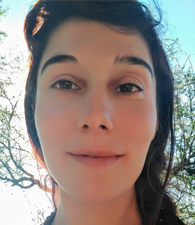 |
From my experience as a dancer and teacher I dedicate myself to research the body in dance as a field of personal and social transformation. Emerged from there a series of practices, explorations, thoughts, together with the coordination of cultural spaces, collective projects, and the edition of a book about the research, which are at the same time, fruit and process platform where I continue wondering about the human experience. The practice of this research is carried out in the 5 basic branches: Alignment, Body Map, Weft Explorations, Basting Gravity, and Ballet from a contemporary point of view. |
|
| Weft explorations |
|
| We will explore possibilities of will-modulation to find a tone of doing-being without abandoning or opposing what emerges. Thus, we enter in the study of tensegrity to create individual and group structures that support themselves by distributing their forces throughout the entire system they produce. The body as a large network, the space as a pulsating membrane, the cooperation as the base substance of the link. Nothing-nobody is insignificant. If something-someone moves, everything changes. The interdependence between body parts, the group and the environment as conditions to invert the vertical order of gravity. |
|
|
|
|
| MONDAY |
| Kevin Dockery |
US |
|
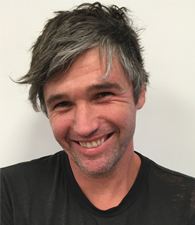 |
A physical thinker, mover, musician, writer and nature historian who uses performance to explore ideas of self, place, and fit. His movement training includes 18 years of studying CI, contemporary performance, and 14 years somatic practice. He completed a Feldenkrais training in 2011 and has been integrating Feldenkrais practice in his movement and dance teaching practices since then. He received an MFA in interdisciplinary performance from UC Davis in 2019 and is currently pursuing a PhD in performance studies, also at UC Davis. |
|
| Sensing, Shared Systems |
|
„Gravity is the root of lightness; stillness, the ruler of movement.“ Lao Tsu
Contact Improvisation offers the dancer an ecosystem, a complex thicket full of momentum, inertia, friction and gravity. Exploring this landscape with our tactile intelligence can be deeply satisfying and even sublime - but it can also leave us feeling lost and untethered. In this class we will utilize states of stillness and motion to nourish our dancing, establishing deep supportive connections with ourselves and the dancing environment, and to find a greater sense of clarity, ease, and joy. |
| Jadi Carboni |
IT/DE |
|
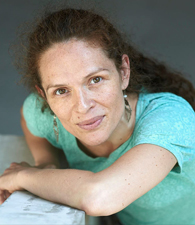 |
Jadi is a Teacher, Choreographer, Dancer, body-worker, outrider of different performing arts, and healing practices. In 2001 after winning a scholarship at the Biennale of Venice, she moved to Germany to deepen her CI and BMC studies with Stephanie Maher and Ka Rustler. She regularly visited Contact dance Festival and CI classes in Germany, Italy, Greece, UK, and Poland, where she follows Kirstie Simson, Ray Chung, Nita Little, and Joerg Hassmann. She trained martial arts (Qi Gong, Aikido), overtone singing, and several bodywork techniques, as Sound therapy, Reiki, and Zen Therapy. In 2004, she began to share her CI practice initiating her first Lab at SNDO, to continue in 2006 with her first CI course for Body Surf Scotland. From 2010-2016, back in Berlin, she thought CI for the professional Dance Program at “Etage”. |
|
| The Permeable Touch |
Somatics into CI |
| My interest focus on the qualities that each specific touch carries within. We explore different intensities "in–tensions”, and muscle tonus, to approach the act of yielding, sharing center, counterbalance. We observe, sense, and embody our perceptions to transform it into motion and dive in our contact dances with freedom and confidence. The class begins with a bodywork, which includes awareness exercises, to connect with the space and the inner sense of the body. With different partners, we investigate textures and qualities in the body, to identify their specific tactile and kinesthetic potential. Then space opens for longer improvisation sessions to deepen into the practice. The class ends with a grounding touch practice, a technique I developed to ground the body and to integrate the new experiences. |
|
|
|
|
| TUESDAY |
| Gabriele Reuter |
DE |
|
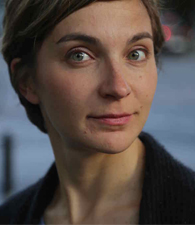 |
Gabriele is a choreographer, dancer and urbanist based in Berlin. At the heart of her artistic practice and teaching is an ongoing interest in improvisation in performance. In this context she has collaborated and performed with many artists in the field and initiated a range of performance events. Since 2009 she performs with the London-based improvisation collective “Neat Timothy”, co-creating performance evenings with Rick Nodine, Seke Chimutengwende, Jane Leaney and Bryony Perkins. She has also collaborated extensively with Susanne Martin. Gabriele taught CI, Contemporary Dance, Composition in dance institutions and Universities internationally since 2003. Gabriele co-lead the workshop program of Tanzfabrik Berlin between 2009-18. www.gabrielereuter.de |
|
| Group Genius |
|
| For the duration of this class we are a temporary collective of both performers and audience. We spend our time creating instant compositions, feeding from the intelligence of many bodies. Non-stop listening, noticing and responding. Non-stop resonance and spontaneous decision making. Both when we are performing and when we are watching. Sensing when to stay out and when to come in. Agreeing on rules of play, only to test their limits. Engaging and disengaging from the group. Cultivating our awareness of the shifting landscape of the space around us, when in and out of contact. Improvising groups have their own intelligence: a transformative super-power, allowing us to step into the unknown at any moment, to trust and co create with whoever is around us. |
| Tamara Ashley |
UK |
|
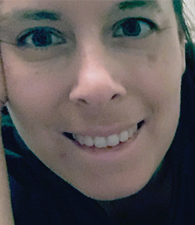 |
I am a dancer, performance artist, yoga and somatic practitioner, teacher and researcher interested in exploring the moving body-mind for the development of creativity, freedom, self-expression and healing. I have practiced the form of CI since 1996, and have integrated this with studies in yoga, developmental movement and energy healing. Teachers who have influenced me include Nancy Stark Smith, KJ Holmes, Nina Martin, Andrew Harwood, Katy Dymoke and Janis Claxton. I recently co-facilitated the UK Contact Improvisation Teacher’s Exchange, and I will co-facilitate ECITE in the UK in 2020. I am a senior lecturer in dance at the University of Bedfordshire. |
|
| Environments of Energy/Touch |
Somatics into CI |
| In this workshop, we will explore energetic and tactile layers of practice that can construct a rich and enlivened dancing environment in CI. We will start by exploring the internal physical layers of sensation in the bones, the connective tissues, and the fluids. We will then extend the exploration to the inner and outer layers of skin investigating how we meet the world and one another. Moving beyond the physical layer, we will also explore how to access and work with the energetic layer through our dancing together and in solo. The workshop will offer a series of experiences and tools that help deepen the navigation of inner and outer environments through touch and energetic work. |
|
|
|
| |
| |
|
|




















